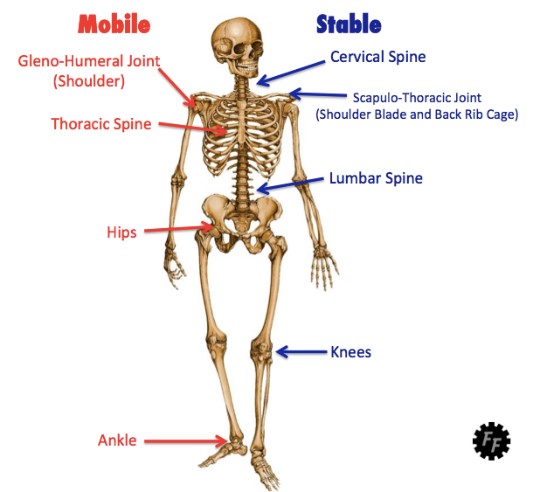Functional screening

During movement, some joints have a greater need for mobility and some joints have a greater need for stability in order to function effectively. The diagram below highlights the needs of the main joints in the body during movement. For example, the hip needs quite a large degree of mobility during a lot of fundamental movement patterns like running and jumping so mobility is an important quality for this joint. If a joint does not possess the adequate mobility or stability that it needs during movement then faulty and dysfunctional movement patterns can occur. Functional screening is an effective method of observing the fundamental movement patterns of a player and identifying movement imbalances (Cook et al, 2010; Cook et al, 2014). Screening is the process of assessing a player’s movement patterns and it gives coaches information on the joint mobility, stability, and muscular balance of a player (Bishop et al, 2015).
The “functional” in Functional Screening refers to a movement that is commonly used in physical activity and sport, for example, the squat exercise. Squatting is a common movement used daily by all active individuals. The squat movement pattern occurs when sitting, getting up from a seated position or when bending to pick an object. Rugby players squat frequently during training, practice, and play. Players move into a form of squatting when they are preparing to pack down in a scrum, use a squat pattern to get ready to jump in a lineout, and use a form of squat when driving an opponent back during a tackle. The squat, it can be stated, is a common ‘functional’ movement pattern within the game of Rugby.
Using an Overhead Squat movement pattern, we can observe and assess a player’s movement ability. This can help highlight any imbalances in terms of muscle tightness or weakness, and joint mobility/stability issues that may exist in completing such a movement (Cook et al, 2010; Clifton et al 2015). The aim is to help the coach to observe possible areas of imbalance so that they may be able to design a more individualised training programme for their players.